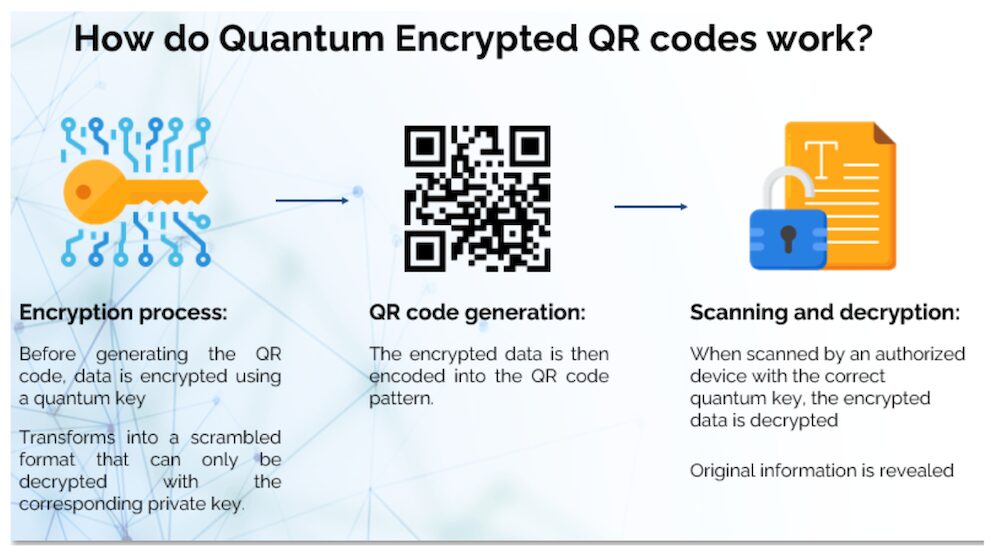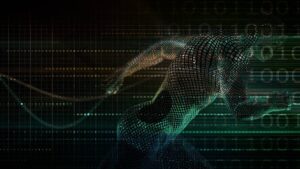Codeifai takes QR codes into the quantum decade

Codeifai eyes QuantumAI payments. Picture via Getty Images
- Quantum computing threat puts old QR codes on notice
- Codeifai readies quantum-secure payments push
- Big opportunity opens as quantum disrupts trust
The QR code, first developed by Japanese company Denso Wave in the 1990s, has already reshaped how we pay, track and verify.
But beneath its recognisable black-and-white surface lies a problem the industry can’t ignore anymore.
The data behind most QR codes today is guarded by traditional cryptography such as RSA or ECC, systems that have served us well but are destined to collapse once large-scale quantum computers arrive.
Quantum machines will be able to run algorithms, like Shor’s, that can break RSA and ECC in a fraction of the time, giving hackers the ability to decrypt or forge transactions that were once considered secure.
That’s not science fiction anymore; the timeline is tightening, and the risk is real.
Unbreakable lockboxes
This is where quantum-secure QR codes step in.
They may look the same on the outside. But inside, the data is protected with post-quantum cryptography.
These encryption algorithms are built to withstand today’s strongest computers, and the far greater power of tomorrow’s quantum machines.
Lattice-based encryption, hash-based signature schemes – they’re no longer just theoretical constructs.
They’ve now been vetted and standardised by NIST (the US National Institute of Standards and Technology) as the new guardrails for the post-quantum era.
In other words, a quantum-secure QR code is a lockbox that even a quantum adversary can’t pry open.
Payments face quantum reckoning
The most obvious application of this technology is in payments.
Every time someone scans a QR code to move money, approve a BNPL transaction, or connect to a crypto wallet, they are relying on the assumption that the underlying system cannot be intercepted or forged.
Right now, that assumption only holds until quantum computers reach maturity.
If those systems are breached, even payment data captured today could be decrypted retroactively in the future.
Quantum-secure QR codes change that equation.
By encrypting transactions with PQC (post-quantum cryptography), and by bolstering key distribution with quantum-safe protocols, they ensure that what is sent remains sealed forever.
For banks, fintechs and payment processors, the question isn’t if this matters, but how quickly they can adopt it before their infrastructure is quantum-retired.
Codeifai steps into the quantum fast lane
For ASX-listed Codeifai (ASX:CDE), this is exactly the gap it has been preparing to fill.
The company’s trajectory has already shifted from a legacy focus on physical anti-counterfeit measures to digital trust platforms.
Its ConnectQR initiative was launched in 2024. That marked a pivot from simply authenticating products to enabling consumer engagement, compliance, and scalable data verification.
Earlier this year, Codeifai also snapped up AI-powered Trust Codes in a $2.15m deal to bolster its product identity and traceability capabilities.
The next step is even bigger.
Through the recently proposed acquisition of Antennae Transfer, soon to be rebadged as QuantumAI Secure, Codeifai is preparing to add a quantum-hardened payments and communications layer to its portfolio.
Codeifai’s QuantumAI Secure will provide three core functions.
First, a payments gateway built to resist retroactive decryption, so even if someone stores transaction data today, they won’t be able to crack it with a quantum computer in the future.
Second, file transfers that ensure sensitive material like contracts, intellectual property and medical records stay confidential for years to come.
And third, secure messaging protocols designed from the ground up to withstand attacks in a quantum-enabled world.

What makes this possible is Antennae’s integration of advanced cryptographic techniques – such as Kyber for key exchanges and Dilithium for digital signatures, via open-source libraries like liboqs and oqs-openssl.
And it goes further, Antennae is layering in AI-driven anomaly detection that monitors activity in real time and learns from emerging attack patterns.
That combination of PQC and AI sets it apart in a field where resilience and responsiveness will both be critical.
Timing is everything
Quantum computers capable of breaking RSA and ECC are expected within a decade, and regulators are already warning firms to prepare.
Finance will be hit first, but the urgency is spreading into healthcare, defence, and enterprise systems.
By acting now instead of patching later, Codeifai positions itself ahead of the curve.
QR codes disrupted the world once by making payments and data exchange frictionless. Quantum-secure QR codes are set to disrupt again by keeping that experience trustworthy in a quantum era.
Codeifai is one of the few players positioned to deliver that end-to-end trust.
And that puts it in the box seat for the quantum decade ahead.
At Stockhead we tell it like it is. While Codeifai is a Stockhead advertiser, it did not sponsor this article.
This story does not constitute financial product advice. You should consider obtaining independent advice before making any financial decision.
Related Topics
UNLOCK INSIGHTS
Discover the untold stories of emerging ASX stocks.
Daily news and expert analysis, it's free to subscribe.
By proceeding, you confirm you understand that we handle personal information in accordance with our Privacy Policy.








